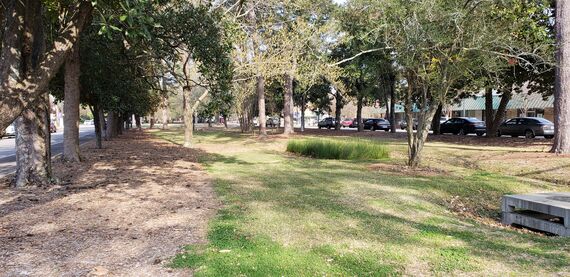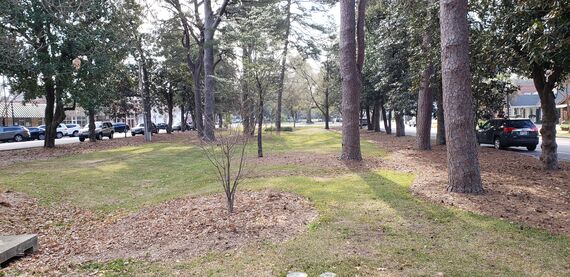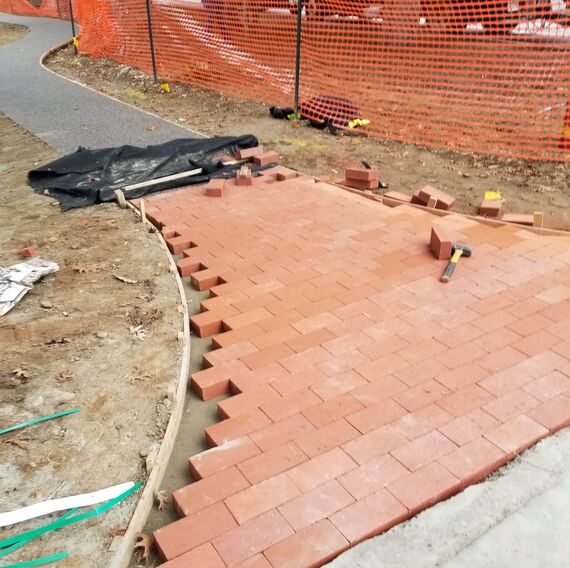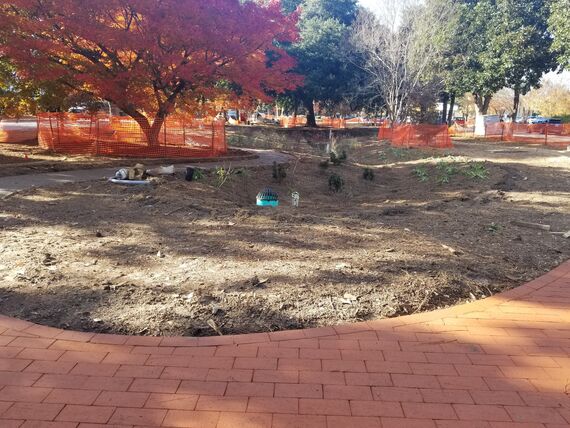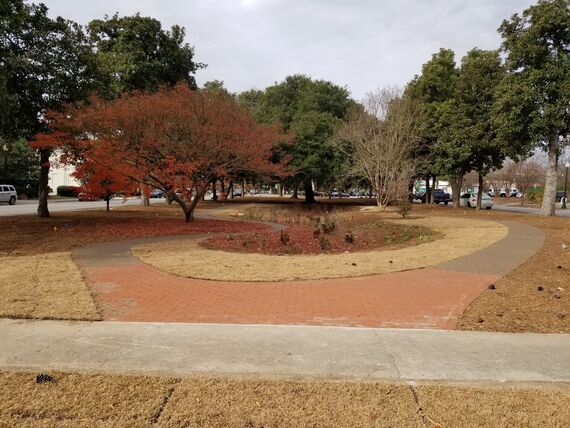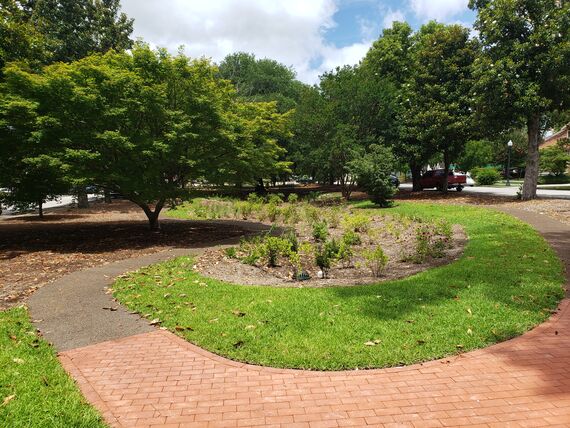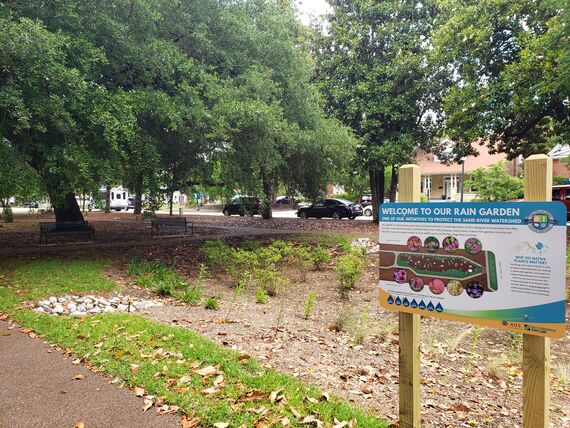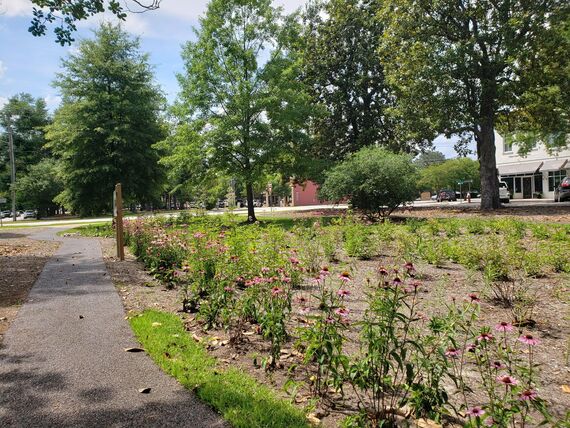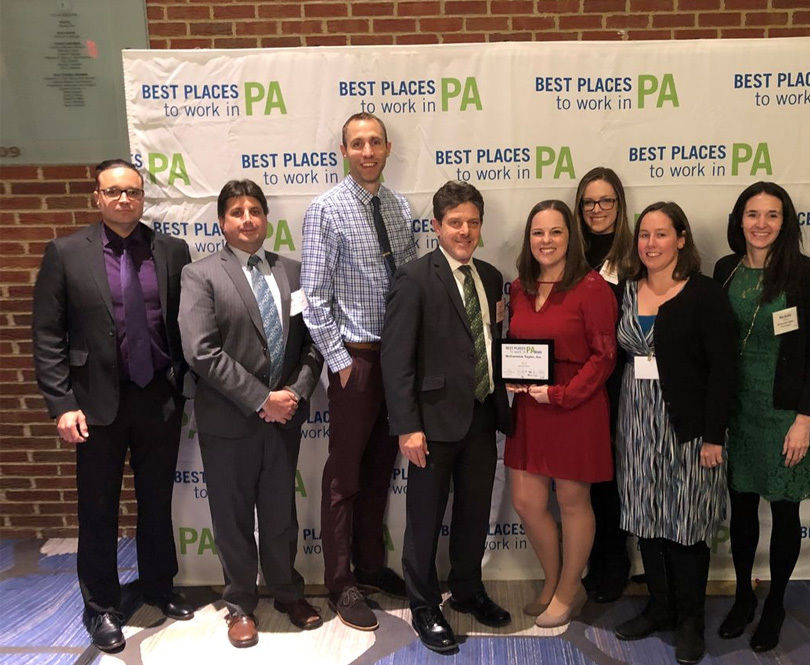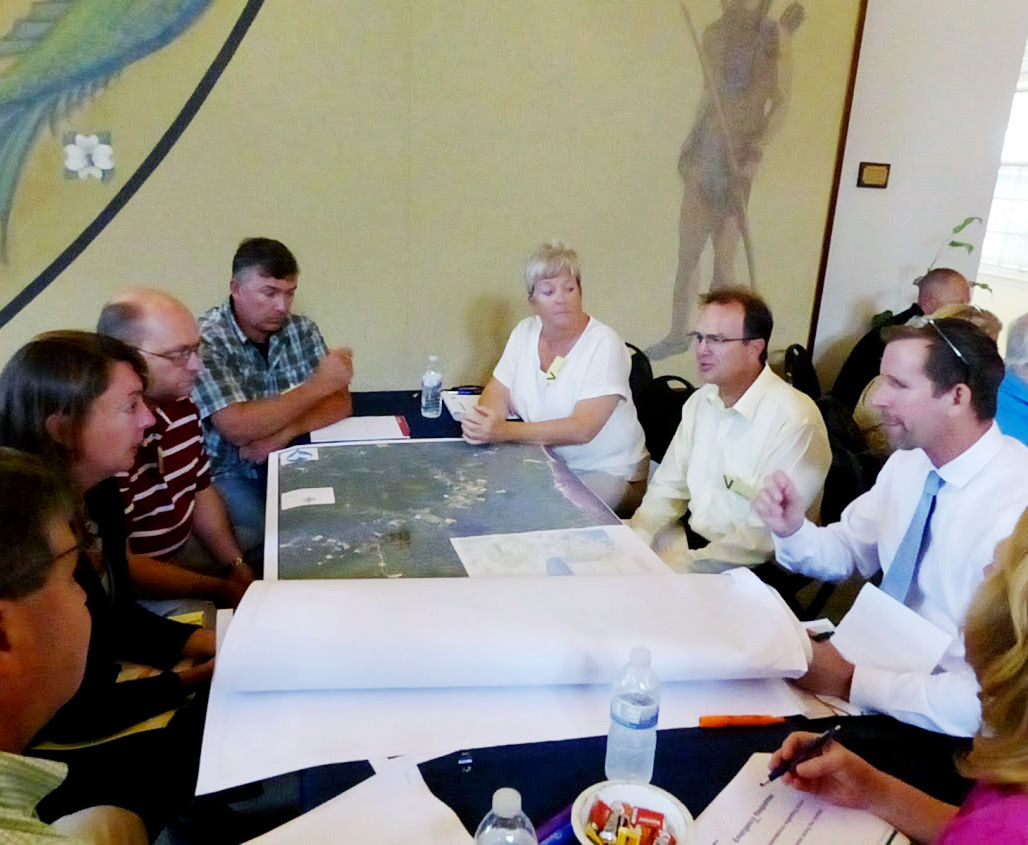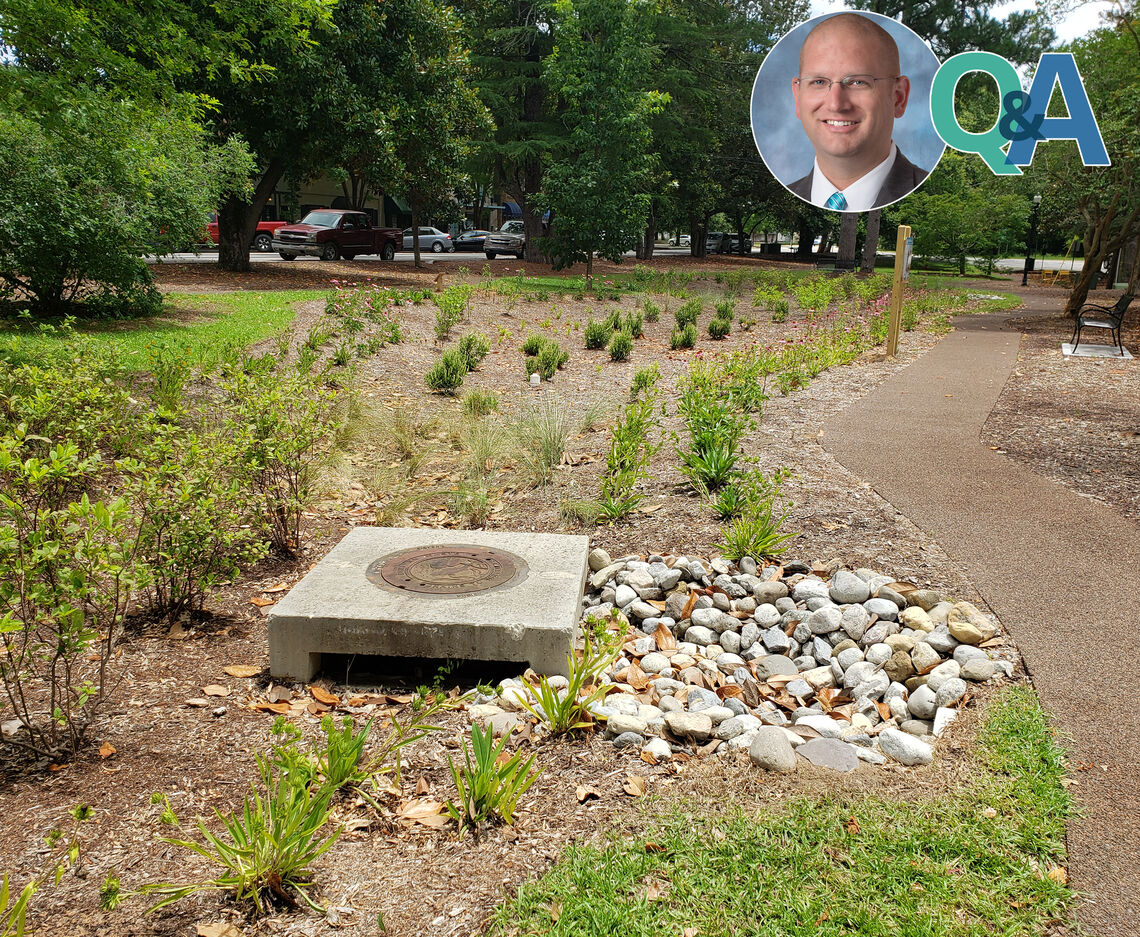
ASK A PROJECT MANAGER: AIKEN PARKWAYS REVITALIZATION
The city of Aiken, SC wanted to create a network of pathways in and around its historic downtown, where the paths through the parkways provide residents with a range of beautiful, natural spaces to relax, meet, and play. This project benefits residents, business owners, and visitors of Aiken as it creates a parklike setting within the City’s historic commercial district. It allows for a place for picnics, hanging out, and exercising, and creates a hospitable venue for events, such as music, food trucks, and other festivals. But more importantly, the project benefits the environmental ecosystem of Aiken by creating habitat for insects, birds, and other animals, and by removing harmful contaminants from the urban stormwater runoff.
We sat down with Jason Hetrick, PE, CFM, to learn more about this award-winning project.
What is your role on this project? What was McCormick Taylor responsible for?
I was the project manager responsible for overseeing the project from conception through construction. During the design phase, I worked with our team and the City of Aiken to create the design and prepare the bid package. Once under construction, I worked with the contractor to ensure the project was being built according to the plans and to address unforeseen issues that appeared during the construction phase.
Tell us a little bit about what the project is and who it benefits.
The project has multiple facets, with the main focus being retrofitting aging bioretentions that had met their useful life expectancy. After determining that the original bioretentions were overdesigned for their contributory drainage area and their footprint could be reduced and ponding depth made shallower, McCormick Taylor was able to increase the open space within the City of Aiken’s downtown parkways (which was the mayor’s priority in enhancing the useability of the historic parkways).
We also prepared a robust landscaping plan for each bioretention that focused on native species commonly found in the Aiken area and provided year-round color and aesthetics. Creating a habitat for birds, pollinators, and other wildlife within this urban area was a large part of our landscaping plan. While the existing parkways had varying species of mature canopy trees, they lacked food sources and other amenities needed to attract wildlife. In retrofitting the bioretentions, McCormick Taylor replaced the existing biosoil, repaired or added underdrain in areas where infiltration was not meeting acceptable rates, and planted various native plants, shrubs, and evergreen species.
To help the City with future maintenance of the parkways and BMPs, McCormick Taylor prepared a maintenance guide that included planting plans and pictures of the installed species. This will allow City staff to quickly discern between what may be a weed or a plant. The guide also provided a schedule on when to perform the various tasks required to maintain a healthy bioretention BMP and when to perform inspections.
To enhance the public’s understanding of stormwater and the need to create stormwater treatment facilities, such as bioretentions, McCormick Taylor created educational signboards that were placed at each bioretention facility. These signs provide stormwater facts, frequently asked questions, and a graphical planting plan that identified the plant species within each bioretention. The installation of these signs also aided the City in meeting one of its Municipal Separate Storm Sewer System permit requirements for public outreach and stormwater education. We also had the bioretentions certified with the National Audubon Society as a Bird Habitat and Monarch Waystation.
While the primary focus was on retrofitting the aging bioretentions, the project had an overarching theme of restoring Aiken’s historic parkways into a gathering place for residents and visitors. To complement the restored bioretentions, McCormick Taylor collaborated with the City’s Parkway Task Force and developed walking paths that connected the parkways along Park Avenue and ran along the bioretentions. It was important that these pathways were environmentally friendly and would not impact the grand trees the paths would run nearby. Because of this, we specified a flexible, pervious rubber material instead of traditional concrete or pavers. This material would allow for rainwater infiltration and limit future issues caused by tree roots. An added benefit of this material was that various colors could be utilized, in which we chose a speckled brown and grey color that mimicked a stone dust pathway one would find in a public garden, such as Hopeland Gardens just down the street. While the pathway material provided enhanced visual aesthetics, it offered the reduced maintenance and longevity of traditional concrete hardscapes.
Have you come across any challenges or concerns while working on this project?
The parkways are home to multiple grand trees and some unique rare species. Many of the trees were planted in memorial of a loved one or in commemoration of a historic event. Throughout the design and construction, we had to take great care to not damage or impact any existing tree. McCormick Taylor worked with the City’s arborist to identify critical root zones and tree protection areas. This was one of the reasons we chose to utilize the flexible pervious rubber material for the pathways.
The parkways were also home to many underground utilities (e.g., gas, water, and electric), which fed the adjacent commercial properties. To reduce project costs, McCormick Taylor utilized as-built drawings from the original bioretention design supplementing with City GIS data and had the major utilities located. What we found however was that the bioretentions were not always built to what was depicted on the as-built drawings. We were fortunate that the contractor was flexible, allowing us to make design changes on the fly while shovels were in the ground. The communication between the contractor, City, and McCormick Taylor was key to quickly addressing these unforeseen conditions.
While the contractor had not installed the pervious rubber material before, they quickly became adept at the installation and several of the workers indicated that they preferred installing this material over traditional concrete sidewalks.
Does the project have any unique aspects?
To our knowledge, this project is the largest installation of pervious rubber sidewalks in the Midlands of South Carolina and potentially within South Carolina altogether. Consisting of recycled rubber, this material is ideal for installation alongside trees and other landscape areas, as it maintains infiltration and will be flexible in the event of future root heaving.
Since the project was located in the City’s central commercial district, planning and communicating the construction schedule to the adjacent businesses was critical. Also, we worked with the City’s Downtown Development Association to ensure festivals and other events, such as Octoberfest, would not be impacted while construction was ongoing.
What’s your favorite part of the project?
That is like asking a parent which one is your favorite child. I enjoyed every aspect of this project from the collaboration with the City’s Stormwater Administrator, Susan Yates, during the design phase, and working in hand with the contractor, AOS Specialties, to overcome unforeseen issues during construction. Most of all, though, I like seeing the finished product and people using the space. What was once an uninviting area is now frequented by all ages. Seeing people stroll through the parkways is awesome!
